Energiezuinige Koelkast Koopgids voor Kleine Woonruimtes
Wonen in een compacte woning of appartement betekent vaak dat je slimme keuzes moet maken over elk apparaat dat je bezit. Als het om koelkasten gaat, zijn energie-efficiëntie en ruimteoptimalisatie twee van de belangrijkste factoren om rekening mee te houden. Een goed gekozen koelkast kan je helpen geld te besparen op energierekeningen, de impact op het milieu te verminderen en perfect in je beperkte ruimte te passen zonder in te leveren op prestaties. In deze gids laten we zien hoe je een energiezuinige koelkast kiest die past bij je kleine woonruimte en levensstijl.
1. Meet je ruimte nauwkeurig op
Voordat je begint met het bekijken van modellen, meet je beschikbare ruimte zorgvuldig op. Denk aan de breedte, hoogte en diepte van de plek waar de koelkast komt te staan — en vergeet niet ruimte te laten voor ventilatie achter en rondom het apparaat. Let ook op de deuropening: kan de deur volledig open zonder een muur of kast te raken? Een compact of slank model is vaak ideaal voor studio’s, campers of kleine keukens.
2. Kies de juiste maat voor jouw behoeften
Groter is niet altijd beter, zeker niet in kleine woningen. Een koelkast met 100–200 liter (3,5–7 kubieke voet) opslagruimte is meestal voldoende voor één of twee personen. Kook je vaak of bewaar je veel diepvriesproducten, kies dan een model met een klein vriesvak. De juiste maat bespaart niet alleen ruimte, maar vermindert ook het energieverbruik, omdat kleinere koelkasten minder stroom nodig hebben om te werken.

3. Controleer het energie-efficiëntielabel
Energiezuinige apparaten zijn ontworpen om minder elektriciteit te verbruiken terwijl ze goed blijven presteren. Zoek naar modellen met een hoog energielabel (zoals Energy Star of een gelijkwaardig keurmerk in jouw regio). Op de lange termijn helpt een efficiënte koelkast om je energierekening te verlagen en je ecologische voetafdruk te verkleinen. Hoewel zulke modellen soms iets duurder zijn in aanschaf, zijn de besparingen op lange termijn de moeite waard.
4. Overweeg het type koelkast
Voor kleine woonruimtes zijn koelkasten met een vriesvak bovenaan of eendeursmodellen vaak de meest praktische keuze. Deze ontwerpen zijn doorgaans compacter en energiezuiniger dan side-by-side of Franse deurmodellen. Woon je off-grid of op een plek met onstabiele elektriciteit, dan kan een gas- of absorptiekoelkast een uitstekende keuze zijn. Ze bieden flexibiliteit en betrouwbaarheid zonder volledig afhankelijk te zijn van stroom.
5. Let op slimme opbergruimte
Een goed georganiseerde binnenkant kan een kleine koelkast ruimer doen aanvoelen. Verstelbare planken, transparante laden en deurvakken helpen elke centimeter optimaal te benutten. Kies een model waarmee je de indeling kunt aanpassen aan hoge flessen, restjes en verse producten.
6. Let op het geluidsniveau
In kleinere huizen liggen de keuken en woonkamer vaak dicht bij elkaar. Een luidruchtige koelkast kan dan al snel hinderlijk zijn. Controleer bij de productspecificaties of het geluidsniveau onder de 42 dB ligt voor stille werking.
7. Denk aan onderhoud op lange termijn
Kies voor een koelkast die gemakkelijk schoon te maken en te onderhouden is. Uitneembare planken, antibacteriële coatings en een No-Frost-systeem besparen tijd en moeite. Een energiezuinig model met eenvoudig onderhoud zal jarenlang goed functioneren zonder veel gedoe.

Waarom de Smad Gas Koelkast ideaal is voor klein en efficiënt wonen
Als je op zoek bent naar een betrouwbare, energiezuinige optie, is de Smad Gas Koelkast de perfecte keuze voor compacte ruimtes. Hij werkt efficiënt op gas, elektriciteit of beide — zodat je flexibel kunt omgaan met jouw energiebronnen. Met zijn slanke, ruimtebesparende ontwerp en stille werking past hij perfect in kleine appartementen, campers of vakantiehuisjes. Of je nu off-grid woont of gewoon je energierekening wilt verlagen, de Smad Gas Koelkast houdt je eten vers met minimale milieu-impact.
Conclusie
De juiste koelkast kiezen voor een kleine woonruimte hoeft niet ingewikkeld te zijn. Focus op nauwkeurige afmetingen, energie-efficiëntie en slimme opbergruimte. Door een apparaat te kiezen dat speciaal is ontworpen voor compact wonen — zoals de Smad Gas Koelkast — kun je genieten van modern comfort, lagere energiekosten en een duurzamer leven, terwijl je het meeste uit je beperkte ruimte haalt.

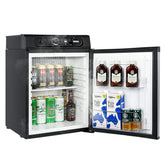

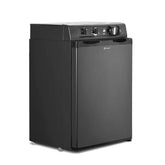
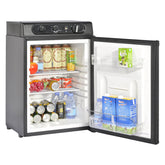
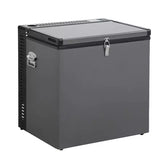
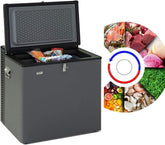
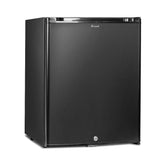
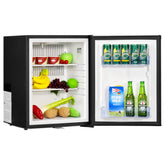
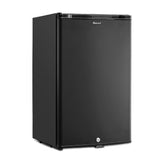
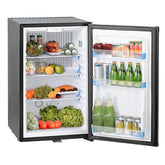
Reactie plaatsen
Let op: opmerkingen moeten worden goedgekeurd voordat ze worden gepubliceerd.